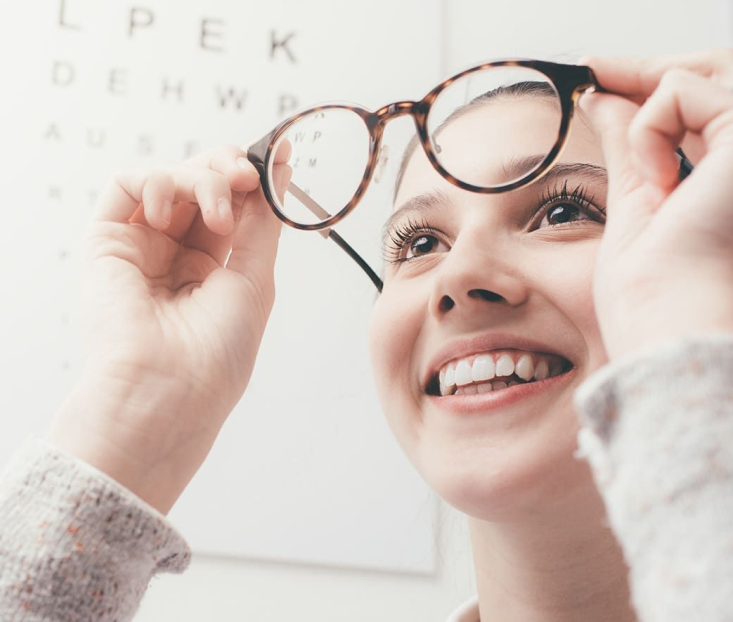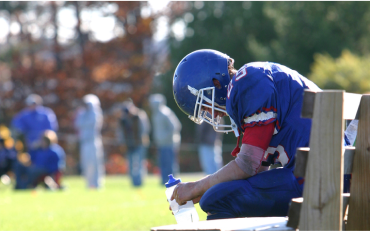Abstract
- Primary objective: To examine the effectiveness of neutralizing prismatic lenses for reduction of headache, dizziness and anxiety in patients with persistent post-concussive symptoms and vertical heterophoria (VH).
- Background: Approximately 5–10% of patients with traumatic brain injury (TBI) develop persistent post-concussive symptoms. Many rehabilitation/treatment modalities are tried, but are largely unsuccessful, indicating a need for more effective treatment.
- Design and method: This retrospective study included 38 patients with persistent post-concussive symptoms, who were diagnosed by an optometric binocular vision sub-specialist with VH (a sub-set of binocular vision dysfunction [BVD] that manifests as vertical eye and image misalignment). Data was collected both before and after prism application and included validated survey instruments for headache, dizziness, anxiety and BVD symptom burden; subjective rating (0–10 scale) of headache, dizziness and anxiety severity; and a sub-analysis of the BVD survey instrument questions that pertain specifically to headache, dizziness and anxiety. Upon conclusion of treatment, subjective assessment of overall improvement of heterophoria symptoms was obtained utilizing a 10 cm visual analogue scale.
- Outcomes: Results demonstrated marked reduction in all measures of headache, dizziness and anxiety (19.1–60.8%) and an overall subjective improvement of VH symptoms of 80.2%. Conclusions: Neutralizing prismatic lenses are an effective treatment of headache, dizziness and anxiety in patients with persistent post-concussive symptoms and VH.

INTRODUCTION
Brain injury is a common occurrence, with recent estimates that TBI is responsible for 280 000 hospitalizations and 2.2 million emergency department visits annually in the US alone [1]. While the majority of patients with concussion can expect a full recovery, persistent post-concussive symptoms can
occur in ~ 5–10% of patients, despite many different types of therapies, treatments and medications. Identification of an effective treatment modality would be of great benefit to this cohort.
It is well established that vision dysfunction (including binocular vision dysfunction [BVD]) is precipitated by TBI. Previous work has identified vertical heterophoria (VH; a sub-set of BVD that manifests as vertical eye and image misalignment) in a group of patients with persistent
post-concussive symptoms and that treatment of the misalignment with neutralizing prismatic lenses resulted in marked reduction of the headache, dizziness and anxiety in that cohort.
Estimates of vertical eye misalignment range from 7–52%, with best estimates at ~ 20% of the general population. These wide ranges testify to the difficulties involved in the identification, quantification and treatment of vertical misalignment. There appear to be three main factors contributing to this difficulty:
- The many associated symptoms of vertical misalignment are diverse. While they are often associated with numerous other medical conditions, they usually are not associated with vision misalignment.
- The battery of tests used to identify and quantify vertical misalignment fail to accurately determine the magnitude and orientation of prism needed. These tests include both dissociated phoria tests (Von Graefe phorias [near and far], vertical vergence testing, red lens test. Bernell light box with Maddox rod, Titmus tester) and associated phoria tests (Mallett unit, Wesson Card, AO Vectographic slide). For example, patients who are eventually determined to have symptomatic VH can have test results that indicate no vertical misalignment or that indicate a hypophoria when a hyperphoria is present.
- The amount of neutralizing prism does not appear to correlate with severity of symptoms. Patients can be very symptomatic with only small amounts of misalignment.

With a lack of clear and actionable vertical alignment diagnostic tests and the diverse nature of BVD symptoms and symptom severity, VH is rarely diagnosed by the current vision and general medical communities. Instead these patients are evaluated by many different providers and are subjected to multiple tests and their symptoms are incorrectly ascribed to a variety of medical conditions including atypical migraines, muscle tension headaches, sinusitis, Meniere’s disease (typical and atypical), anxiety, panic attack, Attention Deficit Disorder/Attention Deficit
Hyperactivity Disorder (ADD/ADHD), convergence insufficiency, reading or learning disability and persistent postconcussive symptoms.
This necessitated the creation of a new method to diagnose vertical eye misalignment to allow for the identification of patients who are amenable to treatment with neutralizing prismatic lenses [2]. This method, known as the Prism Challenge test, is utilized in this study and is described in the Methods section.
The purpose of this paper is to expand upon the previous report utilizing a much broader array of measurements in order to examine the effectiveness of neutralizing prismatic lenses for reduction of headache, dizziness and anxiety in patients with persistent post-concussive symptoms and VH.
Read the full research paper with figures (PDF)











